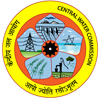Basin Details : Lower Ganga Basin Organisation
About Ganga Basin
The Ganga sub-basin extends over an area of 10,86,000 sq. km and lies in India, Tibet (China), Nepal and Bangladesh. The drainage area lying in India is 8,61,404 sq.km which is nearly 26.2% of the total geographical area of the country. The sub-basin is bounded on the north by the Himalayas, on the west by the Aravallis and the ridge separating it from Indus basin, on the south by the Vindhyas and Chhotanagpur plateaus and on the east by the Brahmaputra ridge. The sub-basin lies in the States of Uttar Pradesh, Madhya Pradesh, Bihar, Rajasthan, West bengal, Haryana, Himachal Pradesh and the Union Territory of Delhi. The State-wise distribution of the drainage area is given below:
|
State |
Drainage area (sq.km) |
|
Uttar Pradesh |
2,94,364 |
|
Madhya Pradesh |
1,98,962 |
|
Bihar |
1,43,961 |
|
Rajasthan |
1,12,490 |
|
West Bengal |
71,485 |
|
Haryana |
34,341 |
|
Himachal Pradesh |
4,317 |
|
U.T. of Delhi |
1,484 |
|
Total |
8,61,404 |
River System
The Ganga originates as Bhagiratni from the Gangotri glaciers in the Himalayas at an elevation of about 7,010m in Uttarkashi district of Uttar Pradesh and flows for a total length of about 2,525 km up to its outfall into the Bay of Bengal through the former main course of Bhagirathi-Hooghly. The Ganga receives its largest tributary, the Yamuna from the right after covering a length of about 1100 km upto Allahabad. The confluence is well known a Sangam. The holy city of Varanasi is situated on the left bank of 41 Ganga about 195 km downstream of Allahabad. During this course, it receives the Tons river from the south. The Gomti river joins it immediately downstream of Varanasi from the left side. Thereafter, the Ganga flows in almost eastern direction. A right bank tributary, the Karamnasa joins the Ganga near Chausa. From Chausa to the confluence of Ghaghara, the river Ganga forms the boundary between the States of Bihar and Uttar Pradesh. A small tributary namely Kao joins the Ganga near Buxar on the right side. Between Buxar and Ara towns two small tributaries namely the Dharmawati and the Gangi join the Ganga on right side. A major tributary, the Ghaghara, joins the Ganga near Chhapra town on the left side. The river Sone joins it near Maner town on right side. Another small tributary, the Mahi, joins the Ganga upstream of Sonepur on left side. The river Gandak joins the Ganga near Hajipur town on left side. Below this, the river punpun joins the Gana near Fatuha on right side and another small tributary; the Baya joins the Ganga near Bachhwara from left side. The river Ganga travels from west to east almost in full length in Bihar and is joined by the river Kiul-Harohar below Suarajgarha on right side and Burhi Gandak near Khagaria on left side. A small tributary, the Belharna joins the Ganga from right side near Bariarpur in Munger district. The river Kosi joins the Ganga on left side near Kursela. The river Chandan, a right bank tributary, joins the Ganga near Nathnagar in Bhagalpur. Then a small tributary, the Chir joins the Ganga on right side downstream of Bhagalpur. Two small tributaries, the Bhena and the Koa, join the Ganga near Kahalgaon on the right side.
The river covers about 110 km along the Uttar Pradesh-Bihar border, 445 km length in state of Bihar. The principal tributaries joining the river in the state of Bihar are the the Ghaghra, the Gandak, the Kosi, the Mahananda and the Sone which are originating form Tibet and Nepal Plateu. The BudhiGandak, the Kamla Balan, the Adwara Group are the important sub-tributaries originating from the Nepal. Basin map of the sub-basin showing the river system and other features is shown below.

Important Projects
The Kosi,Gandak and Indrapuri barrage canal systems irrigate vast areas utilising the flow of the river. Important storages constructed in the basin include Bansagar and Rihand on Sone sub-basin. Some other important projects are Durgawati reservoir project, Punpun barrage project which comes under jurisdiction of Lower Ganga Basin Organization (LGBO), CWC, Patna.
Central Water Commission Network
The Central Water Commission maintains 179 Hydrological Observation sites in this basin which include 91 Gauge sites, 43 Gauge and Discharge sites, 8 Gauge, Discharge and Water Quality sites, 3 Gauge Discharge and Sediment sites, 33 Gauge, Discharge, Sediment and Water Quality sites and 2 Gauge and Water Quality sites. The CWC also operates 58 flood forecasting stations under the jurisdiction of LGBO, Patna. The details of Hydrological Observation and Flood forecasting sites can be checked under the below link.
 Government of India
Government of India 